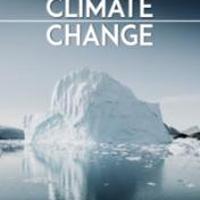Climate Change (1-4) (2)
Many people already know about the polar bear and the problems it now has in its habitat, the Arctic. The Arctic ice is melting. This makes catching seals to eat very difficult for polar bears, because they walk on the ice to do this.
Polar bears are not the only animals at risk from the warming of the Earth. All over the world, there are other animals that could become extinct because of climate change. Many others will find life much more difficult. Many of Australia's animals have lost their habitats because of climate change. These animals include the yellow-footed rock wallaby, the golden-shouldered parrot and Lumholtz's tree-kangaroo.
Many of our medicines, and all the plants and animals we use for food, come from the natural world. In the future, we may not have the large numbers of different animals and plants that we see on Earth today. This will make the world a poorer and sadder place for the people living on Earth in the future.
The effects on companies and communities
Some companies and communities are already seeing the bad effects of climate change and extreme weather.
People buy insurance to protect their homes if something bad happens. But it is going to become more difficult for these companies to give insurance against floods, for example. When floods happen more often, the cost of insurance increases. Insurance companies will find it more and more difficult to protect these homes because it costs so much money.
Food and water companies are also seeing the effects of droughts, floods and other extreme weather, and these effects are increasing. In 2011, there was an extreme drought in Texas, in the United States of America. Many farms could not grow food, or grass for cows, because there was no rain. The farmers lost billions of dollars because they had no food to sell.
Other companies make electricity using the water moving in rivers. But when there are lower amounts of water in these rivers, they cannot make the electricity they need. This has been a big problem for many communities in Brazil.
All of these things can make the price of insurance, food, water and energy go up. Doing nothing to stop climate change now may make prices higher for companies and for people in the future.
Many companies are now trying to stop climate change and the warming of the Earth. They are trying to find ways that the world can grow and develop without putting more carbon dioxide into the atmosphere. Together, companies are working towards a future that makes money, but does not damage the Earth.
Finding ways to live in our warmer world and to stop the temperature increasing could mean more jobs and a better future for communities.
CHAPTER FOUR
Climate change, then and now
Climate change in the past
The Earth's climate has always changed, and this has had a huge effect on life on Earth.
Over millions of years, the climate has changed many times. It has been very, very cold, with lots of snow and ice everywhere. It has also been very, very hot, with forests of trees growing in the Arctic and Antarctica.
For the past 2.6 million years, the Earth has always had some ice in the Arctic and Antarctica. But the climate has changed in a pattern - sometimes warmer and sometimes colder. This pattern comes from the natural changes in the way the Earth moves around the Sun.
There have been many "Ice Ages" in the Earth's past. At these times, there was a large amount of ice over North America, Europe and Asia. The amount of ice was last at its largest about 22,000 years ago. At this time, the sea levels across the Earth were about 130 metres lower than they are today. There were fewer people in the world then, and scientists think that there were only about 130,000 people living in Europe.
Between the Ice Ages, the Earth was warmer, and there was not as much ice. At these times, the sea levels were higher, and there were different plants and animals living on the Earth.
At the end of the last Ice Age, there were fast and extreme changes in the climate that, together with people killing animals to eat, may be the reason why the woolly mammoth became extinct.
Climate change today
Many scientists study the climate and climate change. Their studies show that people are the biggest cause of climate change today. Many of the things that people do increase the amount of greenhouse gases in the atmosphere, and it is these gases that are making the temperature of the Earth increase.
More greenhouses gases in the atmosphere carbon dioxide (CO2), methane (CH4), nitrous oxide (N2O) and others - mean more of the energy we get from the Sun cannot leave the Earth. This makes the Earth warmer.
Plants and animals take carbon (C) from the atmosphere. These plants and animals then die, and their bodies go into the ground. Over millions of years, the bodies of plants and animals can become fossil fuels. People then burn these fossil fuels in their homes, in factories, and in cars, buses and planes. When we burn fossil fuels, the carbon inside them is put back into the atmosphere as carbon dioxide.
People do many other things that put greenhouse gases into the atmosphere. Cutting down trees in forests (deforestation), growing food and keeping animals on farms, and making things in factories all increase the amount of greenhouse gases in the Earth's atmosphere.
Across the world, levels of carbon dioxide in the atmosphere are over 45 percent higher than in 1750. In 1750, there were about 280 parts per million. But, in June 2016, even at the Halley Research Station in Antarctica there were high levels of carbon dioxide in the atmosphere - over 400 parts per million.

